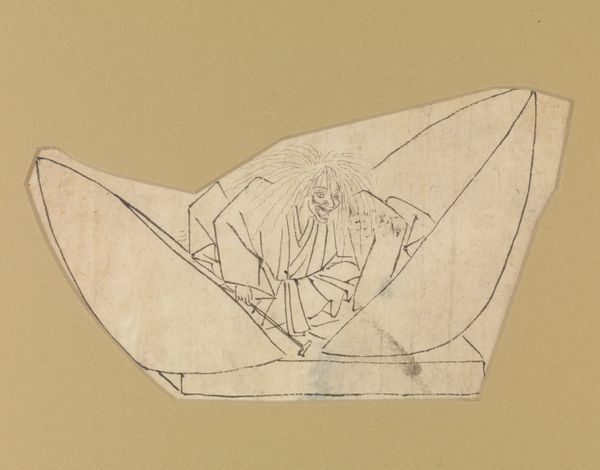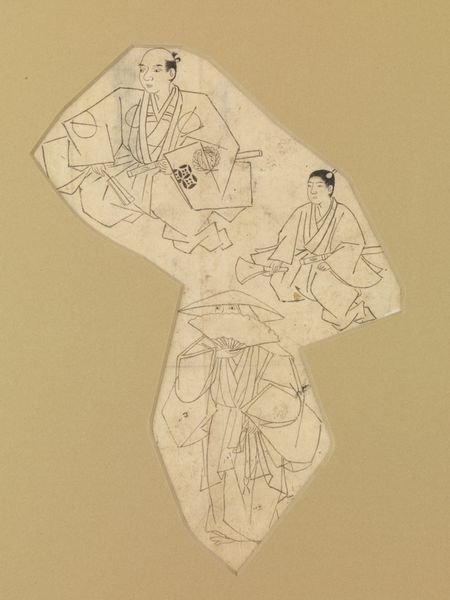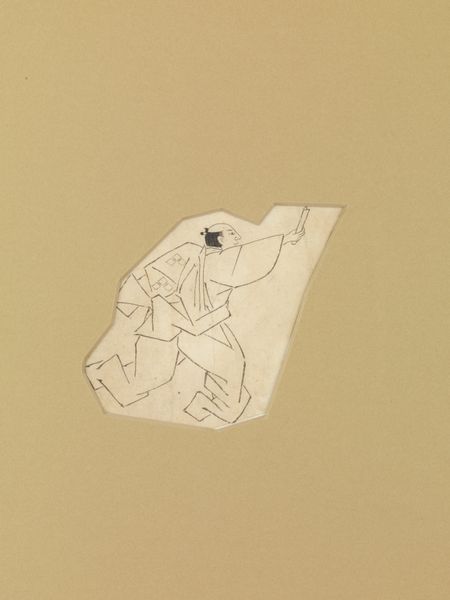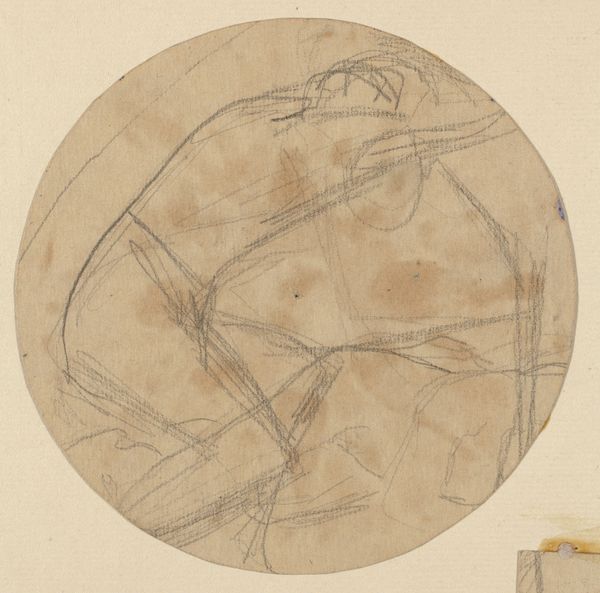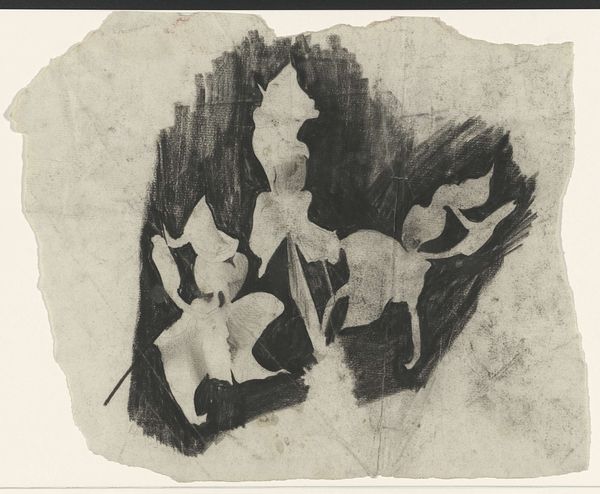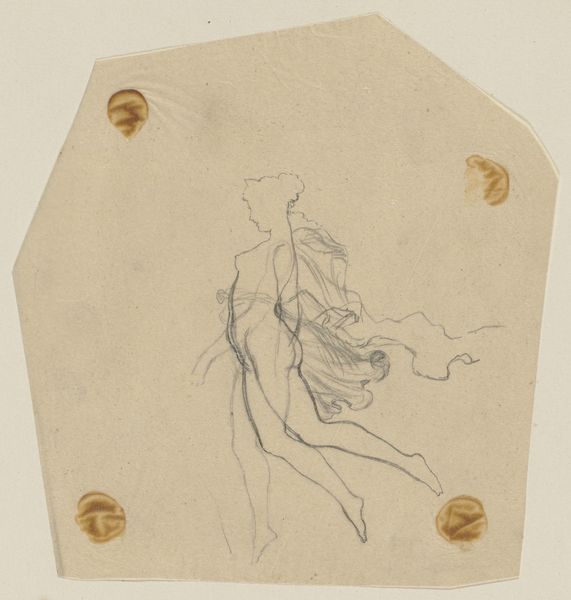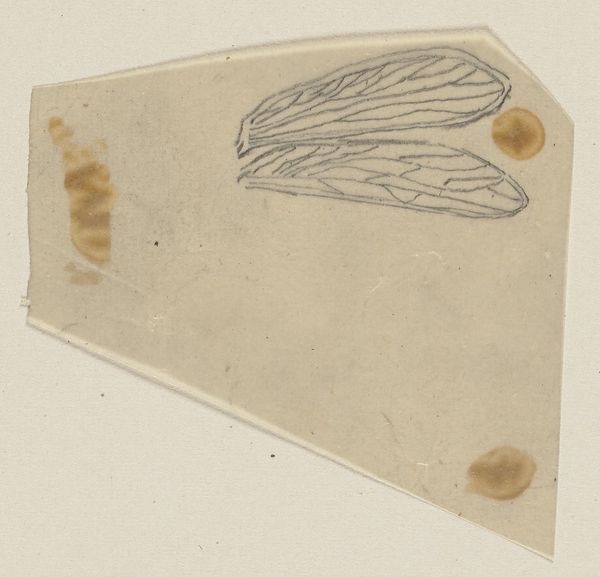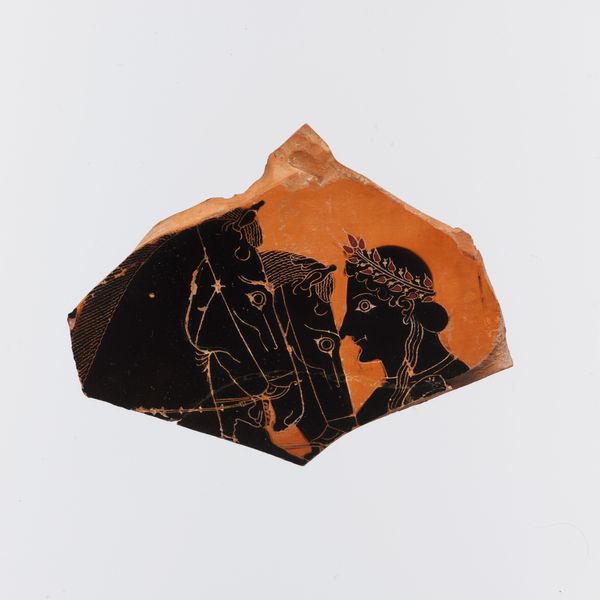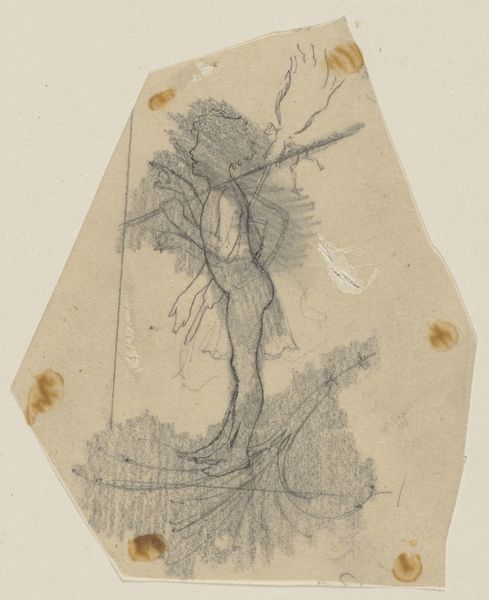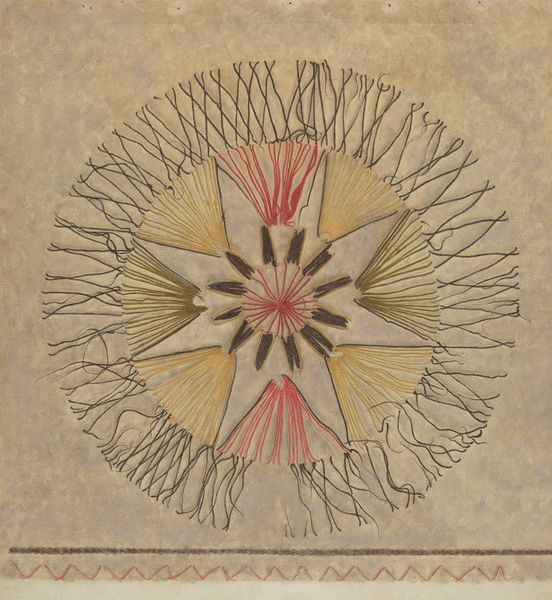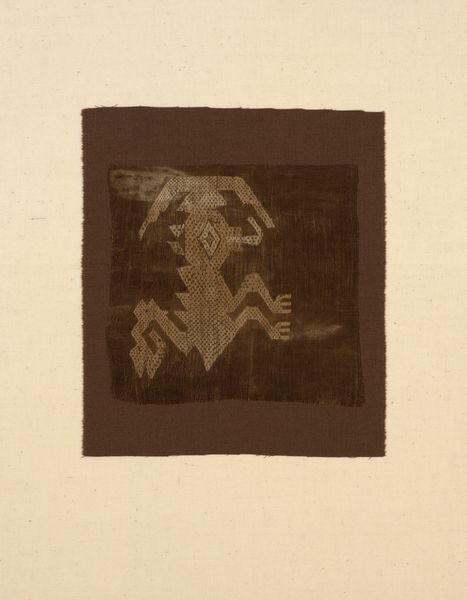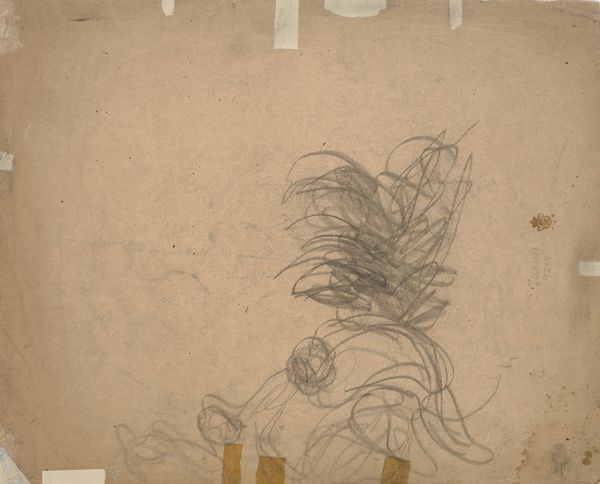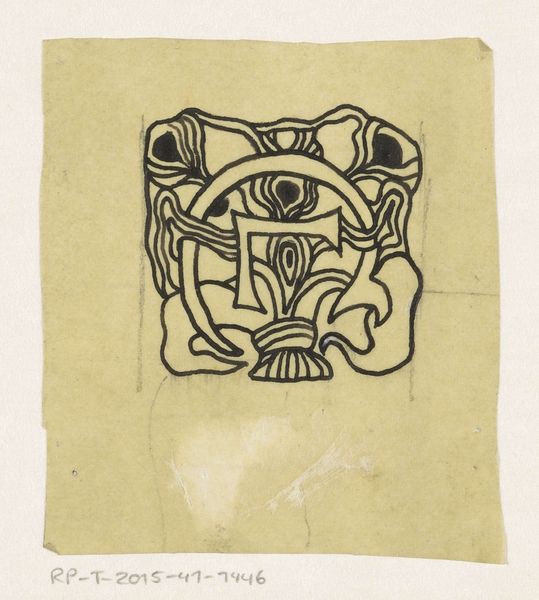
Sketch of a Noh theater scene c. 19th century
0:00
0:00
drawing, paper, ink-on-paper, ink
#
drawing
#
narrative-art
#
asian-art
#
etching
#
ukiyo-e
#
figuration
#
paper
#
ink-on-paper
#
ink
Dimensions: 4 5/8 × 4 7/8 in. (11.75 × 12.38 cm) (sight)14 3/4 × 33 5/16 × 1 7/8 in. (37.47 × 84.61 × 4.76 cm) (outer frame)
Copyright: Public Domain
Editor: We're looking at "Sketch of a Noh theater scene" by Kawanabe Kyōsai, dating back to the 19th century. It's an ink drawing on paper. What immediately strikes me is how raw and expressive the line work is. It feels so dynamic, almost like a snapshot of movement. What stands out to you in this work? Curator: The process really grabs me here. Consider the materials: ink and paper, both readily available, humble even. Yet, look at how Kyōsai uses them. It's not just representation, it's a record of gesture, of the artist’s own labor and energy. We see the direct application, the artist's hand enacting a performance, much like the Noh theatre it depicts. It pushes us to think about how accessible materials can elevate everyday experiences into a valued craft, beyond mere entertainment. What social strata do you imagine engaged with Noh theater at the time, and how might this influence the reception of the sketch? Editor: That's a great point. I hadn’t considered the social element and material accessibility like that. Thinking about the intended audience, Noh was traditionally a pastime for the upper classes, so does that suggest this sketch might have been intended for a more popular, perhaps even commercial, market through prints and reproductions? Curator: Precisely. Now you're seeing how materiality and social context intertwine. This sketch, mass produced via woodblock prints for instance, could bring the spectacle of Noh to a wider audience, potentially even influencing fashion and design. Consider, for example, how kimonos were manufactured. Think about the whole chain of production: the laborers, the raw materials... This piece really asks us to rethink those divisions between “high art” and “low culture” and how artistic and social circles inform artistic interpretations. Editor: I see now. It's not just about what's depicted but how the materials and production processes democratized and changed our perspective. Curator: Exactly. By tracing the making, we gain a deeper appreciation of the artistry and also the consumption practices.
Comments
No comments
Be the first to comment and join the conversation on the ultimate creative platform.
